
views
Finding the Window’s Width

Take the width measurement from the outermost points of your window or trim. Place the end of your tape measure against the left side of your window and extend it to the furthest point on the right side. If your window has trim around it, find the width from the outer edges of the trim instead so it’s completely covered by the blinds. Round your measurement to the nearest ⁄8 in (0.32 cm) and write it down so you don’t forget. Be sure to use a steel measuring tape so you get the most accurate measurements.

Find the width in 3 different places and use the longest measurement. Take your measurements from the top, middle, and bottom of the window, rounding to the nearest ⁄8 in (0.32 cm) if you need to. Make sure the tape measure is level when you take your measurements so they’re accurate. If one of the width measurements you took is longer than the others, use it as the main width to ensure your blinds cover all of the window. Measure every window you’re putting blinds on, even if they look like they’re the same sizes. The actual window dimensions may vary slightly and blinds that fit on one window may not sit well on others.
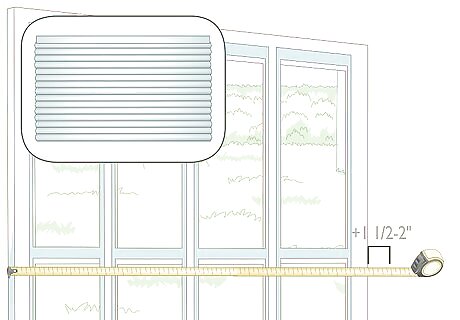
Add 1 ⁄2–2 in (3.8–5.1 cm) to the width if you’re getting horizontal blinds. If your blinds are the same size as your window, light will leak in from the sides and it won’t cover the opening as well. After finding the widest point on your window, add at least 1 ⁄2 inches (3.8 cm) to each side, or 3 inches (7.6 cm) total, so the blinds have better coverage. For example, if the width of your window is 36 inches (91 cm), then get horizontal blinds that are at least 39 inches (99 cm) wide. The mounting hardware may be slightly wider than the width of your blinds depending on the type you choose. For example, roller blinds may have hardware that’s 1 inch (2.5 cm) wider than the shades.Warning: Don’t get horizontal blinds that extend further than 3 inches (7.6 cm) on each side since it can make your window look too small otherwise.
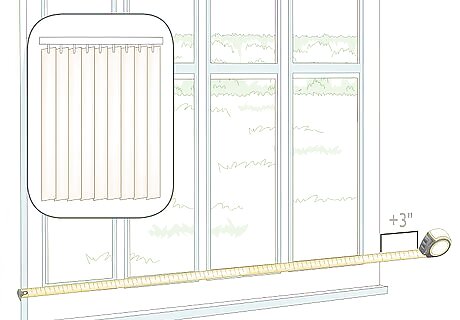
Include 3 in (7.6 cm) on each side of your measurement for vertical blinds. Vertical blinds need a little more space on either side of the window to help block out the light from outside and give you privacy inside. Once you find the widest point of your window, add 3 inches (7.6 cm) to each side of the measurement, or 6 inches (15 cm) total. Write down the final width for your blinds so you know what size to order. For example, if the width of your window is 36 inches (91 cm), then the overall width of vertical blinds should be 42 inches (110 cm).
Measuring the Height
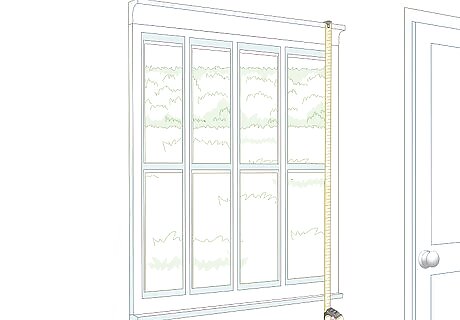
Measure from the top of the window’s trim to the sill if your window has one. Place your tape measure against the top edge of the trim above your window and extend it down to the top of the window sill. Make sure the tape measure is perfectly vertical so you get an accurate measurement. Round the height measurement to the nearest ⁄8 in (0.32 cm) and write it down so you can remember it later. If you want your blinds to extend past the sill to cover it, then add 3–4 inches (7.6–10.2 cm) to your measurement. Stand on a step ladder if you can’t reach the top of your window’s trim.

Add 2–3 in (5.1–7.6 cm) to the height of a window without trim. Start the tape measure at the top of the window opening and extend it down to the bottom edge. Include an additional 2–3 inches (5.1–7.6 cm) on the measurement you just took so the blinds can extend past the bottom of the window. For example, if the window measures 40 inches (100 cm) tall, then the height of your blinds should be 42–43 inches (110–110 cm).
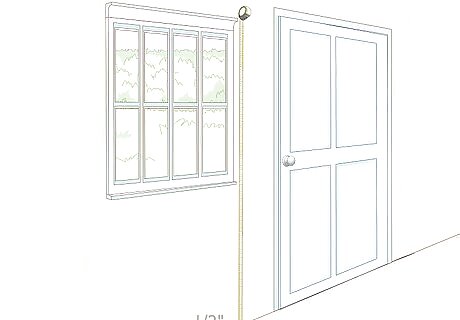
Subtract ⁄2 in (1.3 cm) from the distance between the window top and floor for vertical blinds. Start the tape measure against your floor and extend it up toward the tallest point of your window or the trim around it. Make sure the tape measure stays perfectly vertical or else your measurement won’t be accurate. Once you find the distance, cut off ⁄2 inch (1.3 cm) so the blinds can easily open and close without scraping against the floor. For example, if the measurement from the top of your window to the floor is 72 inches (180 cm), then the length of your blinds should be 71 ⁄2 inches (182 cm).
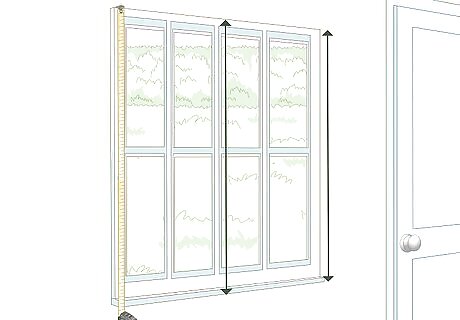
Take your measurements in 3 places on the window and use the longest one. Find the height measurement on the left and right sides of the window before measuring from the center. Make sure each of your measurements is rounded to the nearest ⁄8 in (0.32 cm). Choose the longest measurement you took to ensure that your blinds cover the windows completely.
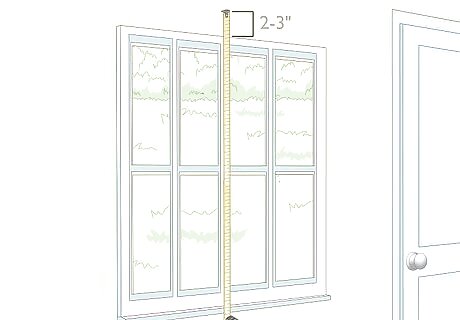
Include an additional 2–3 in (5.1–7.6 cm) for the mounting hardware. The mounting hardware for your blinds usually hangs above your window and its frame, so your blinds need to be slightly longer than the window. Add 2–3 inches (5.1–7.6 cm) to account for the height between the mounts and the top of the window. For example, if the height you measured was 45 inches (110 cm), then the final measurement for your blinds would be 47–48 cm (19–19 in).Tip: You don’t need to include an additional measurement if you plan on mounting the hardware directly to the trim.




















Comments
0 comment